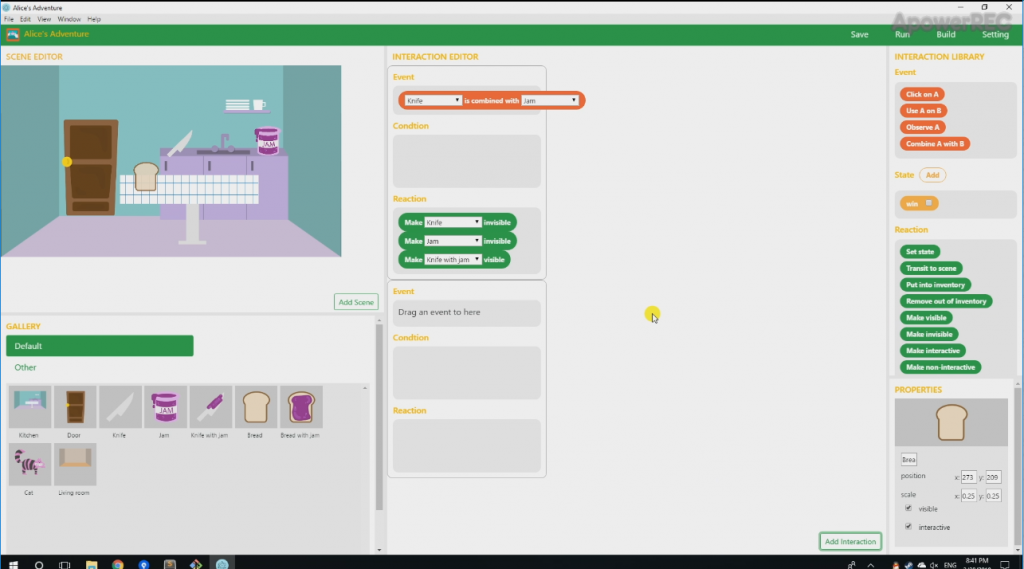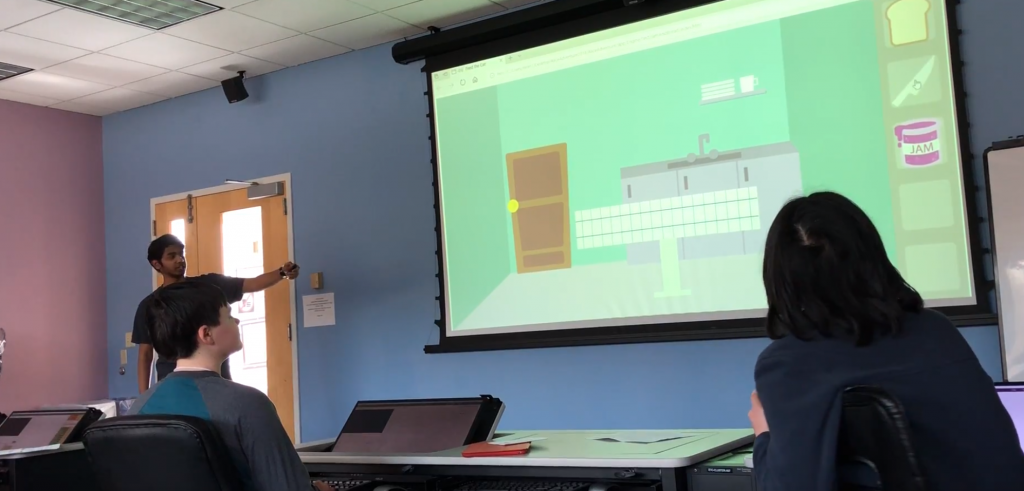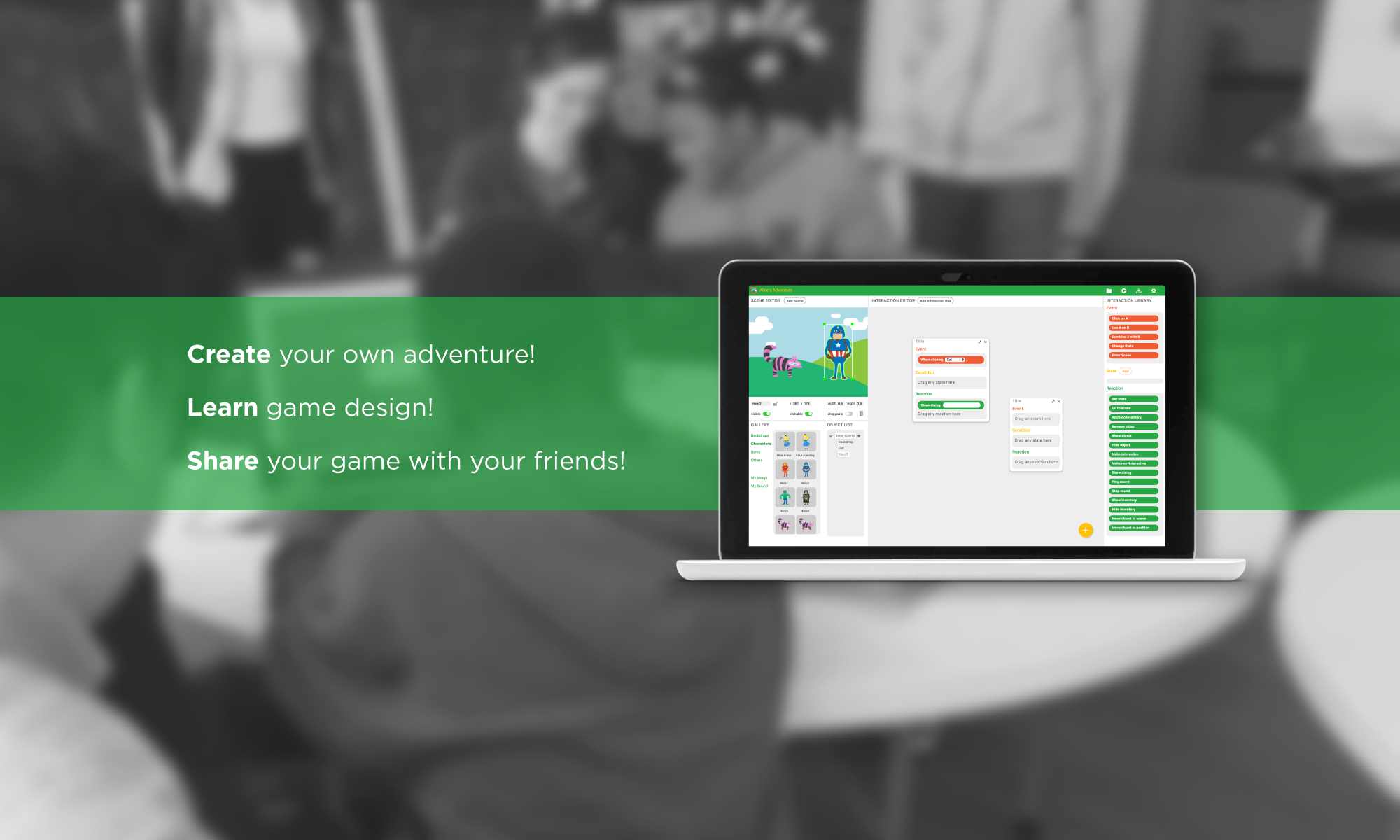The highlight of this week was the ETC Playtest Day we had on Saturday. Our intentions for this day were to glean as much information as possible, watching children use the Alice’s Adventure tool, which now has taken shape (although in need of extensive fine tuning). We had enough of the product ready so that a tester can make interactions and build the game. We wanted to teach children to make one game in particular, so we had the assets imported for that game in itself, and we planned to show the children how to do the same.
The game that we were showing for our playtests was the same game we showed as a demo for our half presentation. The objective of the game is to make a sandwich and feed it to a cat, and when you do that it takes you to a win screen. To make a sandwich, one has to assemble a knife, bread and jam, and switch it out with the ‘knife with jam’ and the finished ‘sandwich’. They do this by collecting the objects into the inventory and then combining them in there. Once you have the sandwich, you bring it back to the living room and drag it onto the cat, who replies with a dialog saying “I love you”. A win screen pops up at this point.

After our halves presentation at the end of Week 10, we received generally good feedback about product and presentation. Some of the points we felt we needed to concentrate on were about testing, documentation and future planning. So this playtest Saturday was a great opportunity for us to re-confirm our goals and tick off a checklist of ideas successfully implemented for our design. The engineers worked hard over the week, and by Friday we had successfully combined our engine, front-end and UI. It was clunky, and there were a lot of last minute bugs, but it does the job. Luckily for us we have plenty of time to polish.
We had 3 batches of varying number of playtesters, all of whom were teenagers. The kids’ reactions to the tool were promising; they grasped the concept of adventure games well enough and they instinctively knew how the scene editor and the interaction boxes worked (However, it has to be noted that a few of them had seen and used tools and programs like this before). We learnt a lot about positioning our buttons and boxes in the User Interface, and we’ll be improving them. Some of the verbs, like “Observe”, were ambiguous and invoked varying ideas in the kids’ minds. We’ll be looking at it carefully again next week and working on solving the above-mentioned issues. We also have faculty (non-instructors) visiting us on Monday and Wednesday to offer advice, so we’re also looking forward to that. I’ll be back with those updates at the end of next week. See you then!

